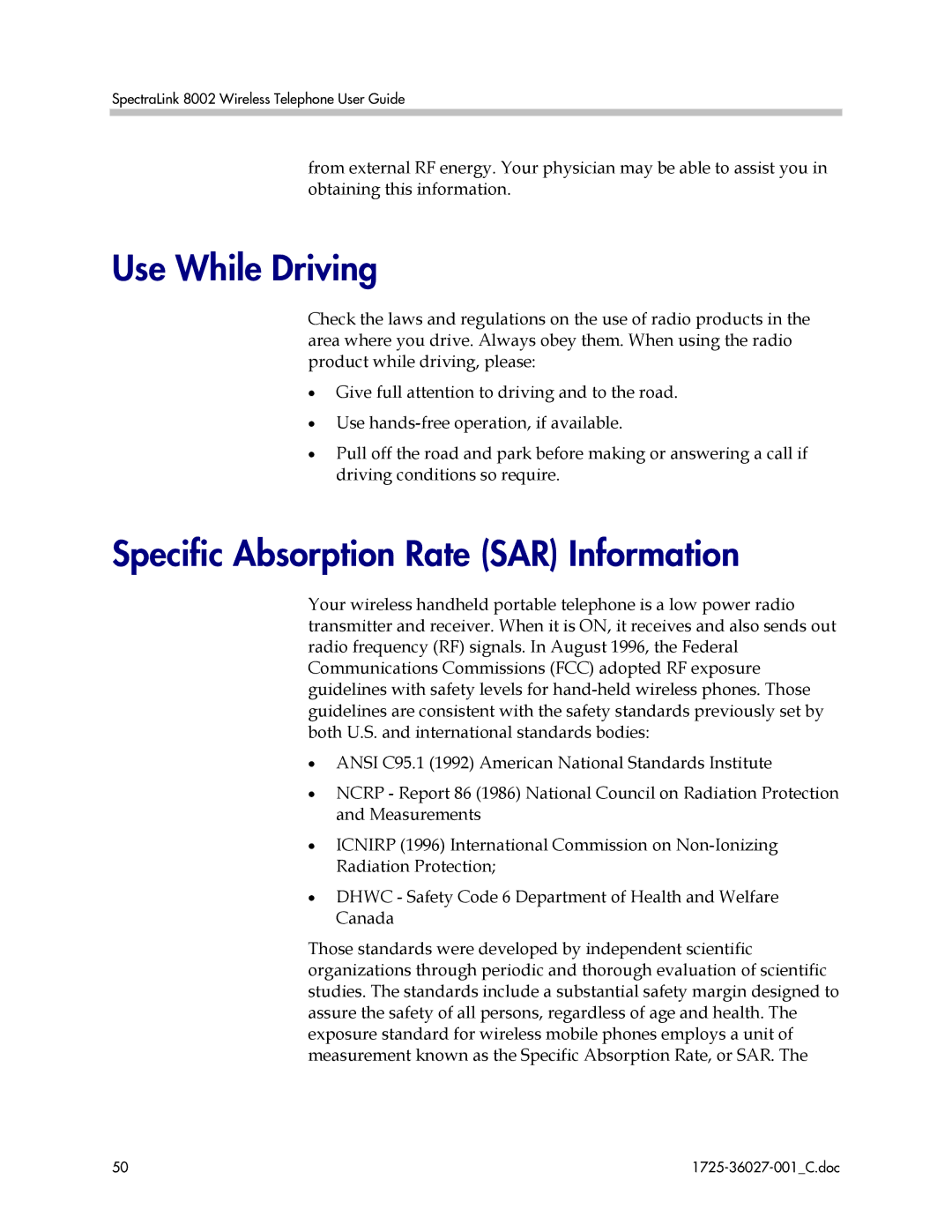SpectraLink 8002 Wireless Telephone User Guide
from external RF energy. Your physician may be able to assist you in obtaining this information.
Use While Driving
Check the laws and regulations on the use of radio products in the area where you drive. Always obey them. When using the radio product while driving, please:
•Give full attention to driving and to the road.
•Use
•Pull off the road and park before making or answering a call if driving conditions so require.
Specific Absorption Rate (SAR) Information
Your wireless handheld portable telephone is a low power radio transmitter and receiver. When it is ON, it receives and also sends out radio frequency (RF) signals. In August 1996, the Federal Communications Commissions (FCC) adopted RF exposure guidelines with safety levels for
•ANSI C95.1 (1992) American National Standards Institute
•NCRP - Report 86 (1986) National Council on Radiation Protection and Measurements
•ICNIRP (1996) International Commission on
•DHWC - Safety Code 6 Department of Health and Welfare Canada
Those standards were developed by independent scientific organizations through periodic and thorough evaluation of scientific studies. The standards include a substantial safety margin designed to assure the safety of all persons, regardless of age and health. The exposure standard for wireless mobile phones employs a unit of measurement known as the Specific Absorption Rate, or SAR. The
50 |
